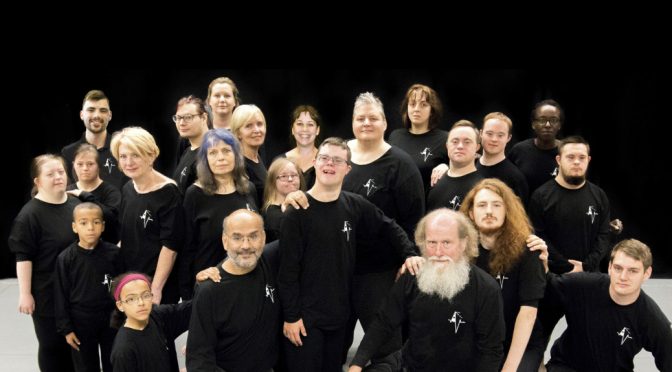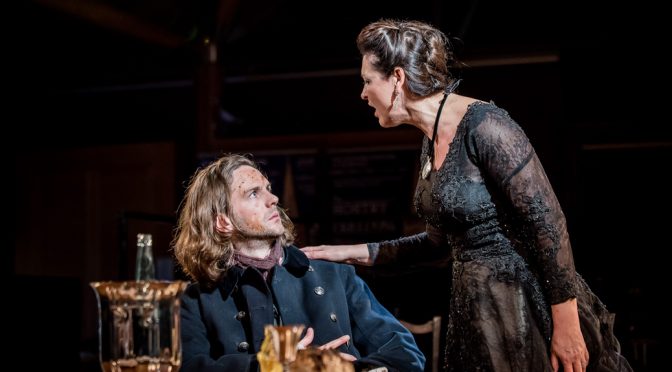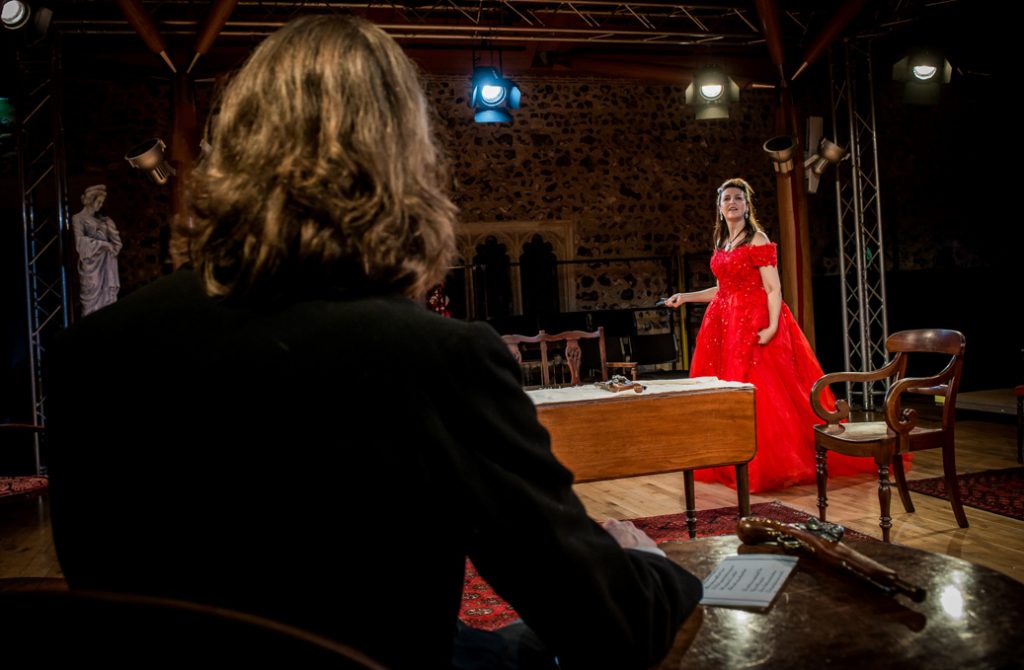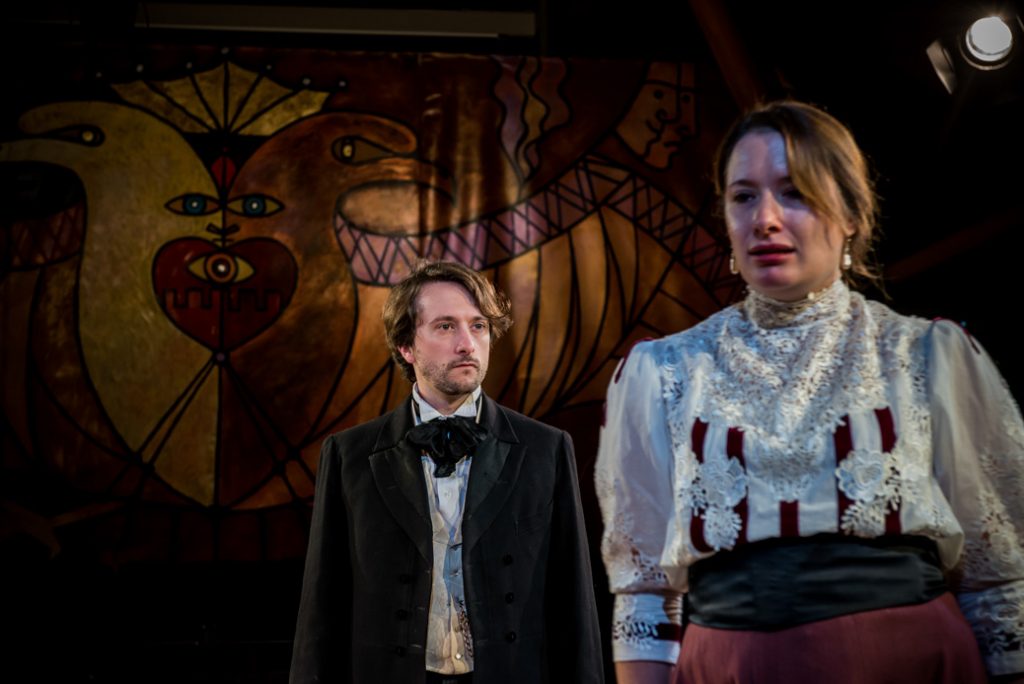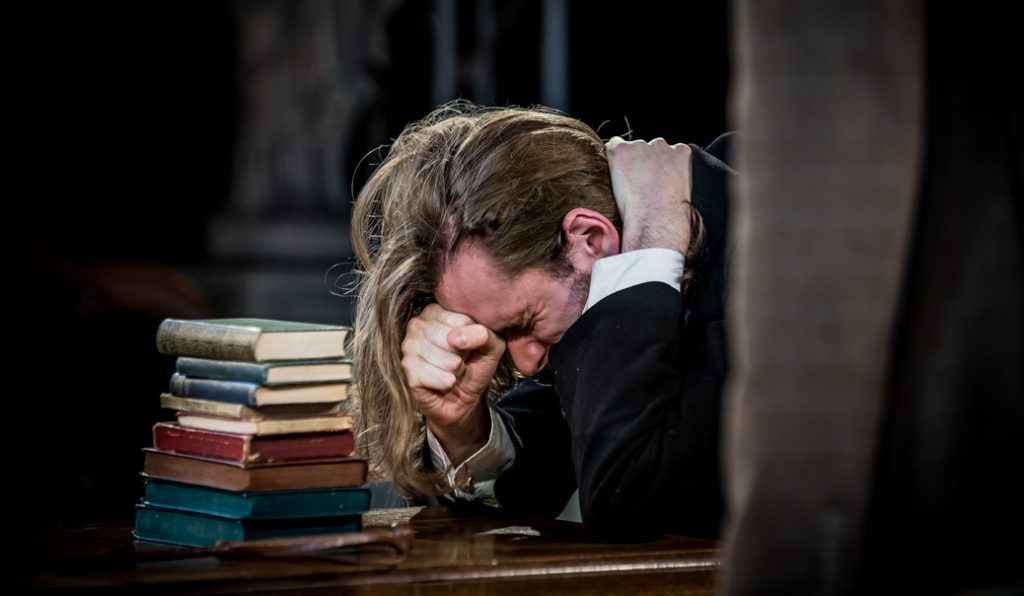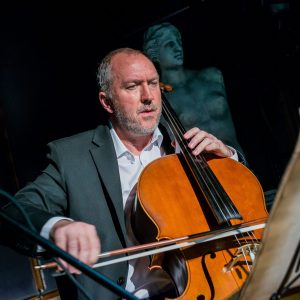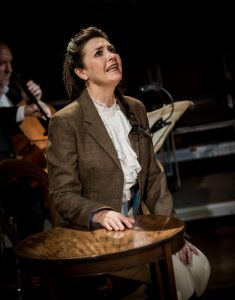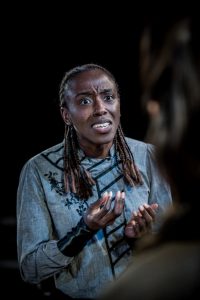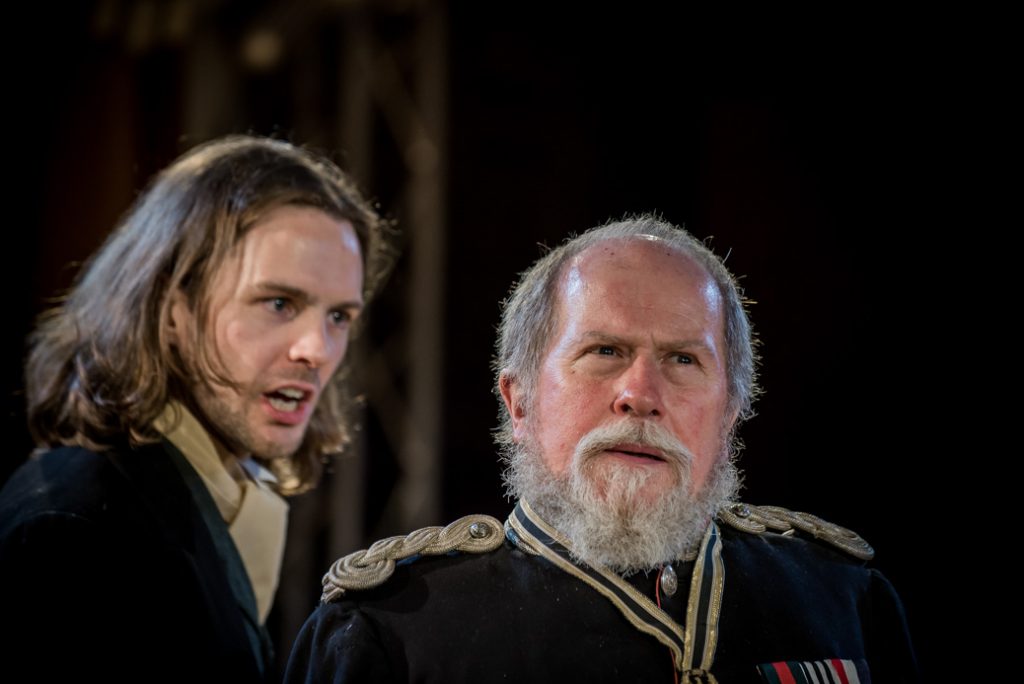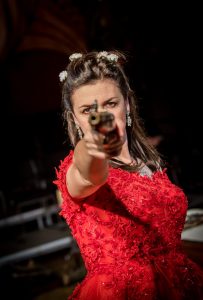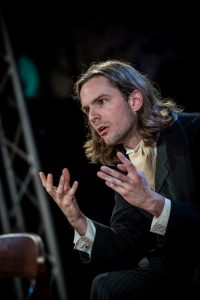Norwich’s Hostry Festival 2018 play is Rebecca Chapman‘s “The Boy in the Lighthouse“, a Total Ensemble Theatre Company production that is inclusive in every sense of the word. From the actors it casts to all the various forms of visual and audio art forms it embraces, and to the warning to be careful that the cast don’t step on your toes if you’re in the front row!
“Our focus this year is on inclusion and diversity, and I’m more than proud to announce Total Ensemble Theatre Company’s World Premiere of Boy In The Lighthouse as our festival Central Production. With a cast of over 25 from all over Norfolk.” – Stash Kirkbride, Hostry Festival founder
Some might consider an inclusive production that is mainly movement and music from a cast of all abilities and levels of experience a strange or even risky choice after a history of pedigreed plays and poems at the 8-year-long Hostry Festival. These have included the likes of Jean Cocteau’s “The Eagle Has Two Heads“, Melvyn Bragg’s “King Lear in New York“, TS Eliot’s “Four Quartets“, and “The Night Of The Iguana” by Tennessee Williams.
If the Hostry Festival is willing to experiment and take risks, then Total Ensemble embodies that in extremis.
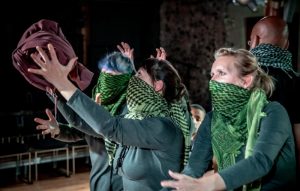
On opening night there was a packed audience, some even standing, as the play opened to the sound of gunfire or was it fireworks? There was intense movement and music, and several masked cast seemingly playing pass the parcel with a wrapped bundle. Already it’s a mystery wrapped in a bundle of layers just as the parcel is passed around and a layer removed becoming a garment put on by one of the actors.
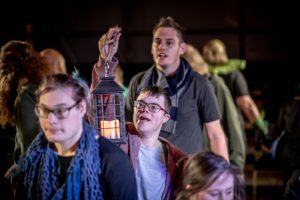
If, in the opening scenes, cast and audience both seem lost, with the plot at times needing a light shone upon it, have patience, for that light is eventually shone and the parallel tales of the play knot together like twin searchlights eventually crossing over and finding their quest.
“Living in a remote lighthouse, isolated and forgotten, a young man creates a world for himself with the help of his imagination and the magic that resides in the beam of light that scans the ocean at night. There is a mystery… the solution to which lies within a secret buried deep in the past. Join him as he embarks upon an adventure into fantastic worlds, travelling to find peace in a place where he truly belongs.”
The play is mysterious, a journey, never on the rocks but sometimes in the dark. In fact, it is performed in the round so we all see it from different sides, as this round is a square!
If the performance is a little unclear in the early scenes, then so are the characters’ ideas of where they are heading. This may be in part down to the play’s piecemeal coming together over several years, multiple influences, and a creative democracy where workshops and improv have created aspects of the whole that have been weaved into its final form. Chapman, like a master carpet weaver, has, though, managed the feat of tying it all together and maintaining the story and pace in the packed 75-minute drama that effortlessly sails by.
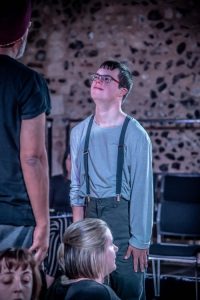
The seriousness with which the piece is performed is portrayed on the faces of every actor, some smiling, some grimacing, everyone giving one-hundred-per-cent. As Hugh Darrah, who plays the Boy, says “we are super focused” and he was, holding a calm consistent centre to the play whilst all around him is sometimes blowing about like a storm.
The physical set pieces of bodies entwined, contorted, at rest yet like sharp rocks surrounding the base of a lighthouse, appear uncomfortable as a dry stone wall but seemingly at ease, much as their cast do.
Timing is everything and the choreographed coordination of movement with the music is transfixing, at times it is perfect with hands in the air moving synchronously with the sounds and narration.
The soundscape is dramatic and really conjures up the slightly creepy end-of-pier atmosphere as well as the lighthouse seascape. It’s even reminiscent of Twilight Zone or Twin Peaks – a favourite of creator and director, Rebecca Chapman. Somehow Chapman, who created the complex soundtrack and voice over, wrote the play, directed, also plays three roles and clearly takes great care of her cast.
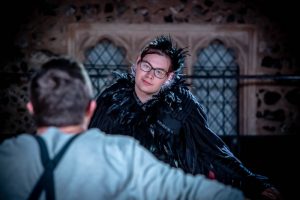
Young actor Lexi Watson-Samuels carried off the role of a crow convincingly with a bird’s inquisitive and alert jerky head movements, akin to an indigenous shaman channelling a bird. She embodied the role very well and even when not the focus of a scene remained fully present and in role.
Real and surreal, magical and mechanical, collide in a tale that is both exterior and inner journey. The eponymous Boy ‘in the Lighthouse’ is lost and seeking something just like another character in the play, the end-of-pier broken fortune teller, who cannot remember the past or predict the future.
We are bombarded like waves upon a ship in a storm with messages of brokenness, loss, loneliness, abandonment, and a search for meaning and release. Looking for answers and needing the light.
As the play notes say, the Boy in the Lighthouse is a “dark story bathed with light” that leaves you asking questions and recognising human inconsistencies much as man-made light or magical fortune tellers.
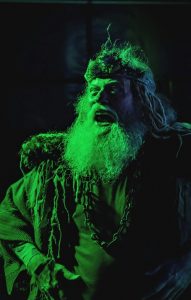
Peter Barrow, acting for the first time with Total Ensemble, though he has been in many a Hostry festival play in past years, is transformed from curmudgeonly sea dog to sea God by costumery that reminds me of a Jon Pertwee Doctor Who and the Sea devils episode from 1972.
The commitment of the cast to telling this tale is evident in their energy, composure, connection and regard for each other’s space and place on stage. This may be about a boy, a man, a god, set in a lighthouse, or fortune teller box, but in the end, nobody steals the limelight they all share it. The cast is listed in alphabetical order not in order of importance and each get equal say and space on the programme to describe their experience of working with Total.
“The greatest shock joining Total this year was the complete lack of hierarchy to the point that I could not discern between alumni and newcomers. Unlike any other experience of group work the atmosphere of acceptance inspires people from all walks of life to come together in confidence.” – Luke Arnup, ‘Teenage Brother/Son of Sea God’
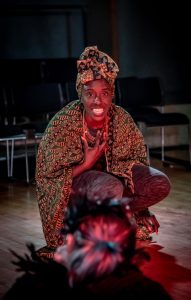
The finished play is an ensemble piece in every sense of the word, inclusive of all its cast, and its audience on four sides. Truly an expertly produced play that really works in the round. You should go see even if only just to read their 15-or-so words of fame that each has been allotted on the back of the programme, I defy you not to shed a tear at how Total Ensemble has made some of them feel included and more confident in themselves.
The Hostry Festival main play runs from the 22nd – 28th October – tickets here or via 01603 598676 (Theatre Royal box office). Wednesday and Saturday, like Monday, are sold out.
